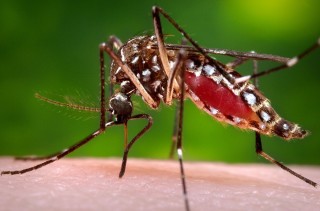The Zika virus is a flavivirus that is related to the yellow fever, the west nile virus, dengue, and Japanese encephalitis with mild symptoms like low fever, rash and a headache, or none at all. However following a brief appearance in 2007, the Zika virus presently has worldwide attention leaving global health body, the World Health Organization, under pressure after an increased spread in 2015.
Here are some reasons why the virus is commanding worldwide attention:
The carrier is a common type of fly
The Zika virus disease is a mosquito-borne disease primarily transmitted by the aedes aegypti mosquito. However, recent reports by Brazilian scientists indicates that the virus may have crossed over to the common mosquitoes, which will dramatically increase the risk of its spread, globally.
Sky News reports that scientists from the Oswaldo Cruz Foundation, Brazil, said that in about a month, they will be able to confirm whether or not the Zika virus is also being carried and transmitted by the much more common culex mosquito which is 20 times more than the aedes aegypti and are significantly more widespread – breeding throughout most of the Americas and parts of Africa and Asia, hence increasing the chances of its spread worldwide.
“Moreover, conditions associated with this year’s El-Nino weather pattern are expected to increase mosquito populations greatly in many areas,” said Dr. Margaret Chan, director general of WHO, at a briefing in Geneva yesterday.
Documented exponential spread and potential global spread
Due to an increased and equally swift spread across the Americas last year, US scientists have implored the WHO to take immediate action in tackling the Zika virus, which they say has “explosive pandemic potential.”
Yesterday, the organization revealed an estimated three to four million infections within a 12 month period, a situation the Dr. Chan described as “dramatically different and explosive.” “Last year, the virus was detected in the Americas, where it is now spreading explosively. As of today, cases have been reported in 23 countries and territories in the region. The level of alarm is extremely high,” said Dr. Chan.
In April 2015, the WHO admitted their slow response in tackling the Ebola virus, which critics have said led to it becoming a huge crisis, killing thousands of people.
Association with birth defects and neurological syndrome
On the 28th of November last year, the Brazilian health ministry announced a link between Zika and increased cases of microcephaly, a rare neurological disorder in babies resulting in their being born with shrunken brains and abnormally small heads, leaving them mentally incapacitated and, sometimes, leading to paralysis.
In 2014, there were only 147 recorded cases of microcephaly, now there are thousands of cases; Brazil alone has reported over 4,000 cases of microcephaly, including dozens of possibly related infant deaths.
“I saw three cases of microcephaly in one day last August when normally I would see one maybe every three months,” said a Brazilian doctor.

The increasing number of epidemics
It was only two years ago that the world, particularly West African countries, was hit with the biggest outbreak of the Ebola virus disease, which it is yet to completely recover from. So far, the Ebola virus disease has killed over 11 thousand people, with the latest death recorded just two weeks ago in Sierra Leone with more flare ups expected.
Currently, Nigeria battles an acute viral haemorrhagic illness – Lassa Fever. The disease which has claimed 82 lives, is on a continuous spread across 19 states, with over 200 cases. Worse still, there is a dearth in medical resources for the treatment of the disease even though there is an effective antiviral medication – Ribavirin.
In Asia, Thailand and South Korea tackles the spread of the MERS coronavirus (Middle East Respiratory Syndrome), a viral respiratory illness, which was first reported in Saudi Arabia, in 2012. On Sunday, Thailand confirmed a new case of MERS CoV in a 71-year old man who arrived Bangkok from Oman. The WHO reports that there have been 1,632 laboratory-confirmed cases of the infection, and 587 deaths across 26 countries so far.
No cure
Zika has no cure, and the hunt for a vaccine is currently on in the United States and other affected regions. But it’s going to be a long wait, as scientists reveal it could take a long while, five years to a decade, for it to be ready.
Some other scientist have said that they could have a vaccine ready for testing within a year or two, but warned that getting approval from regulators could take much longer. Professor Nikos Vasilakis of the University of Texas Medical Branch, Galveston, Texas told the BBC that although the vaccine maybe be ready in a year or two, “What would take the longest time would be the process of passing it through the FDA (US Food and Drug Administration) and other regulatory agencies to allow it for public use,” this, he said may take up to 10 years or more.
Just as there is no vaccine to provide immunity, there is also no specific antiviral treatment available for the treatment of the disease. The Centre for Disease Control and Prevention, says that ‘treatment is generally supportive and can include rest, fluids and use of analgesics and antipyretics.”
In the meantime, the disease will continue to spread, while the world awaits a specific form of treatment from the ongoing research.








